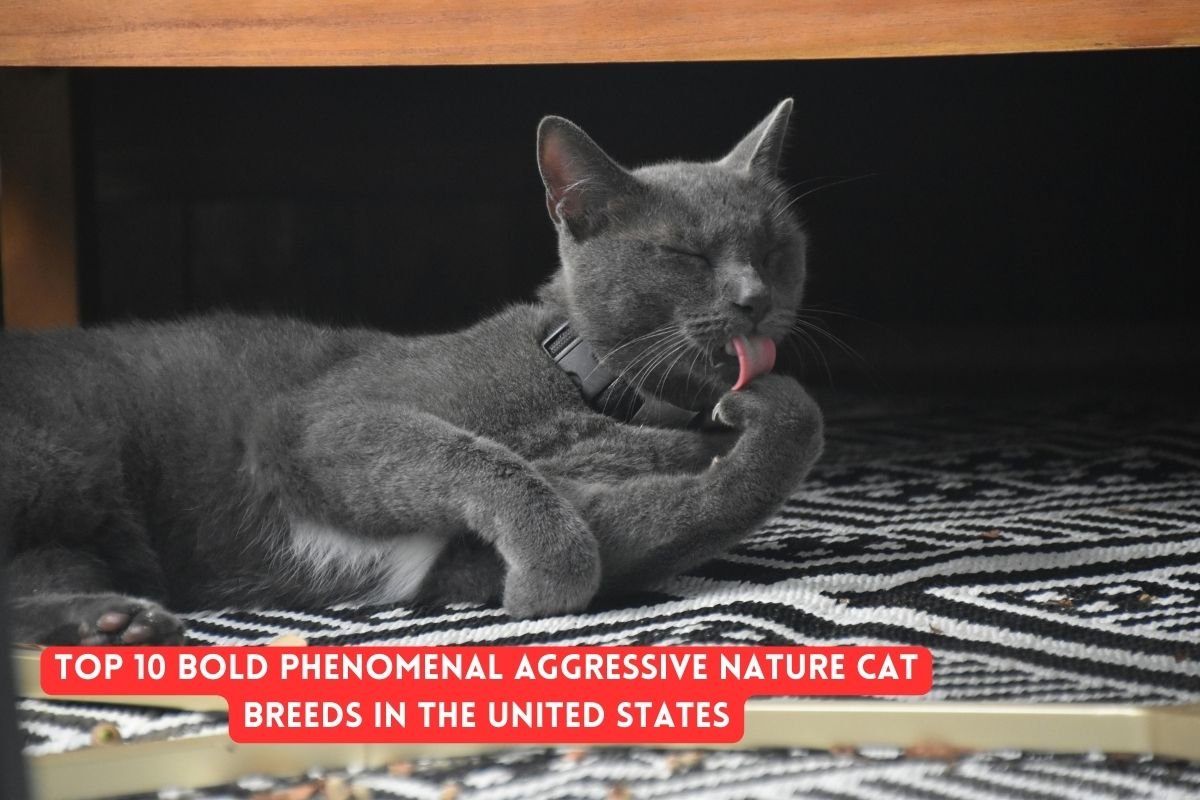Cats, known for their independence and elegance, often have distinct personalities that vary from breed to breed. While many cats are known for their calm and friendly nature, some breeds exhibit bold and aggressive traits that make them stand out. In the United States, certain cat breeds are celebrated for their phenomenal and aggressive nature. Here’s a look at the top 10 bold, phenomenal, and aggressive cat breeds that captivate cat enthusiasts across the country.
Siamese
The Siamese cat is renowned for its striking appearance and vocal nature. Known to be fiercely loyal, they can be quite demanding and territorial. Their intelligence and assertive personality make them one of the most engaging yet challenging cat breeds to own.
Bengal
Bengal cats have a wild appearance reminiscent of their leopard ancestry. They are extremely active, playful, and sometimes display aggressive behaviors if not properly entertained. Bengals require a lot of stimulation and can be quite assertive in seeking attention from their owners.
Sphynx
The hairless Sphynx is known for its extroverted and energetic personality. They can be very demanding and sometimes aggressive if they feel ignored. Despite their tough exterior, they form strong bonds with their human companions and expect a lot of interaction.
Savannah
A cross between a domestic cat and a serval (a wild African cat), the Savannah cat is known for its tall, slender build and aggressive tendencies. They are highly active and require plenty of space to roam. Their wild instincts make them bold and sometimes challenging pets.
Abyssinian
Abyssinians are curious, highly energetic, and playful. Their bold nature often translates into aggressive play, which can sometimes be mistaken for true aggression. They thrive in environments where they can explore and engage in stimulating activities.
Maine Coon
While generally known for their friendly and gentle demeanor, Maine Coons can exhibit aggressive behaviors if they feel threatened or cornered. Their size and strength can make their rare aggressive outbursts quite impactful.
Scottish Fold
Scottish Folds are usually calm, but they have a strong sense of independence. They can become aggressive if their personal space is invaded or if they are not given the autonomy they crave. Their distinct folded ears make them visually unique, adding to their overall boldness.
Turkish Van
Known for their love of water, Turkish Vans are highly active and sometimes aggressive. Their bold personality means they can be quite demanding and sometimes territorial. They are best suited to experienced cat owners who understand their unique needs.
Russian Blue
Russian Blues are known for their elegant appearance and reserved nature. However, they can be quite bold and aggressive if they feel their territory is being threatened. Their independence means they prefer to approach their humans on their own terms.
American Shorthair
American Shorthairs are sturdy and resilient. They can exhibit aggressive behavior if they feel provoked or threatened. Their assertive nature makes them excellent hunters, a trait that translates into a bold and sometimes aggressive demeanor.
Conclusion
Owning a cat with a bold and aggressive nature can be both a rewarding and challenging experience. These breeds, known for their phenomenal personalities, require dedicated and experienced owners who can provide the stimulation and environment they need. Understanding the unique traits of each breed helps ensure a harmonious and fulfilling relationship between the cat and its owner.
FAQs
Are aggressive cat breeds suitable for families with children?
While some aggressive cat breeds can adapt to family life, it’s important to monitor interactions with children and ensure the cat has a safe space to retreat to if needed.
How can I manage my cat’s aggressive behavior?
Providing plenty of mental and physical stimulation, using positive reinforcement, and consulting a veterinarian or a pet behaviorist can help manage aggressive behaviors.
Are aggressive cat breeds harder to train?
These breeds may require more patience and consistency in training due to their strong-willed nature, but with proper techniques, they can be trained effectively.
What should I consider before adopting an aggressive cat breed?
Ensure you have the time, space, and resources to meet the cat’s needs and be prepared for their demanding and energetic nature.
Do aggressive cats get along with other pets?
It depends on the individual cat’s personality and socialization. Some may do well with other pets if introduced properly, while others may prefer being the only pet.
